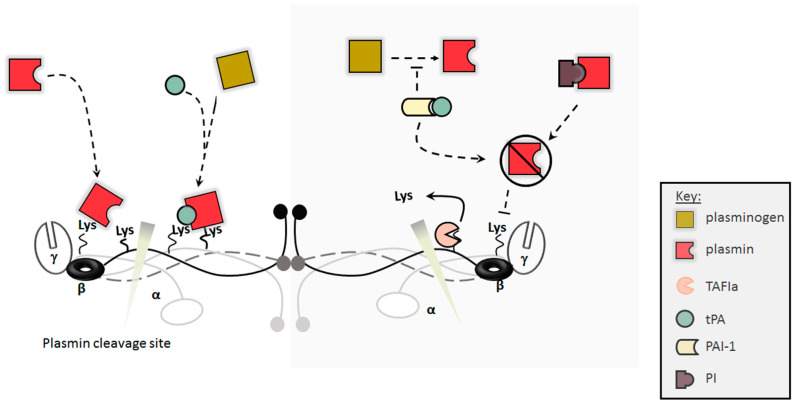Figure 3.
Fibrinolysis. Fibrin clots are broken down by plasmin, which is produced from plasminogen by the tissue plasminogen activator (tPA). Conversion of fibrinogen to fibrin results in the exposure of tPA and plasminogen binding sites. These sites propagate fibrinolysis by enabling the binding of plasminogen and tPA to fibrin network in close proximity, thus enhancing conversion of plasminogen to plasmin. Fibrinolysis is regulated by antifibrinolytic proteins including thrombin activatable fibrinolysis inhibitor (TAFI), plasmin inhibitor (PI) and plasminogen activator inhibitor (PAI-1). Activated TAFI (TAFIa) inhibits the lys-dependent interaction of plasminogen and tPA with fibrin, thus blocking fibrinolysis. PI interacts with Plasmin preventing plasmin-mediated cleavage of fibrin. PAI-1 interacts with tPA inhibiting the conversion of plasminogen to plasmin.

